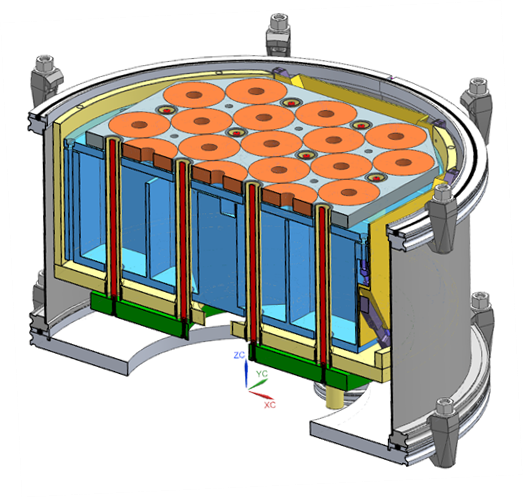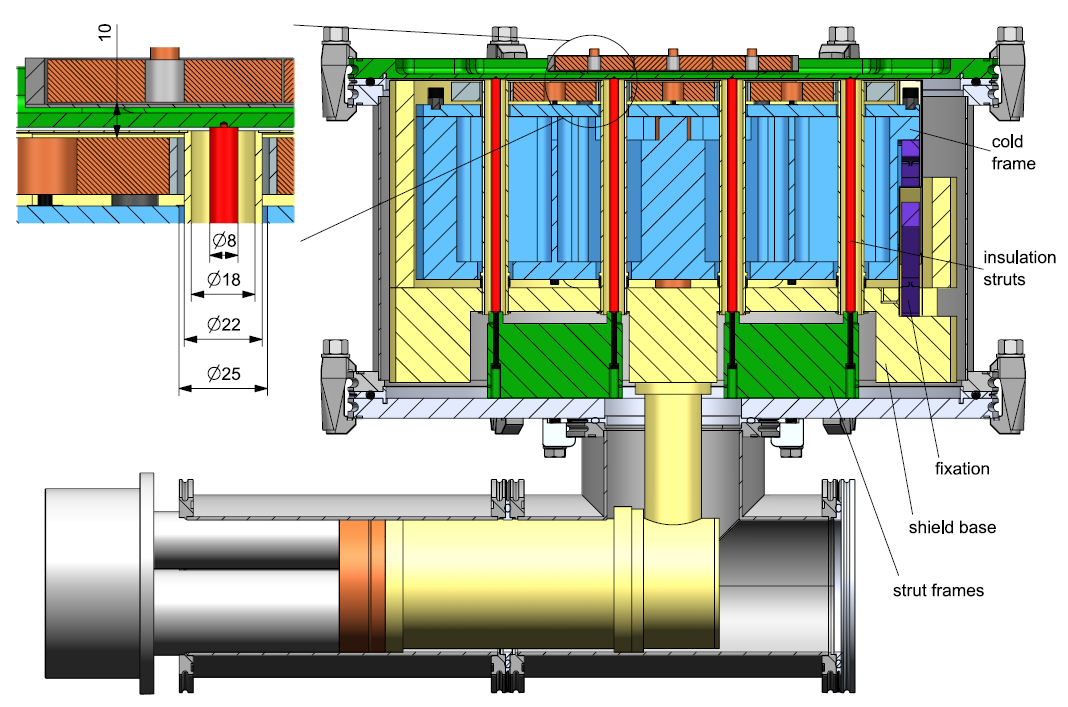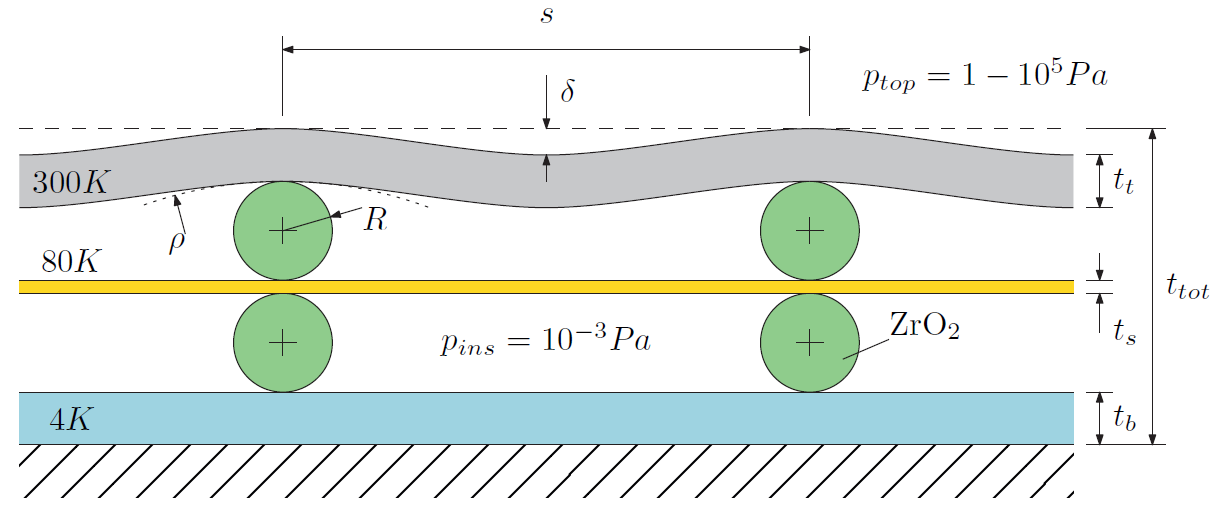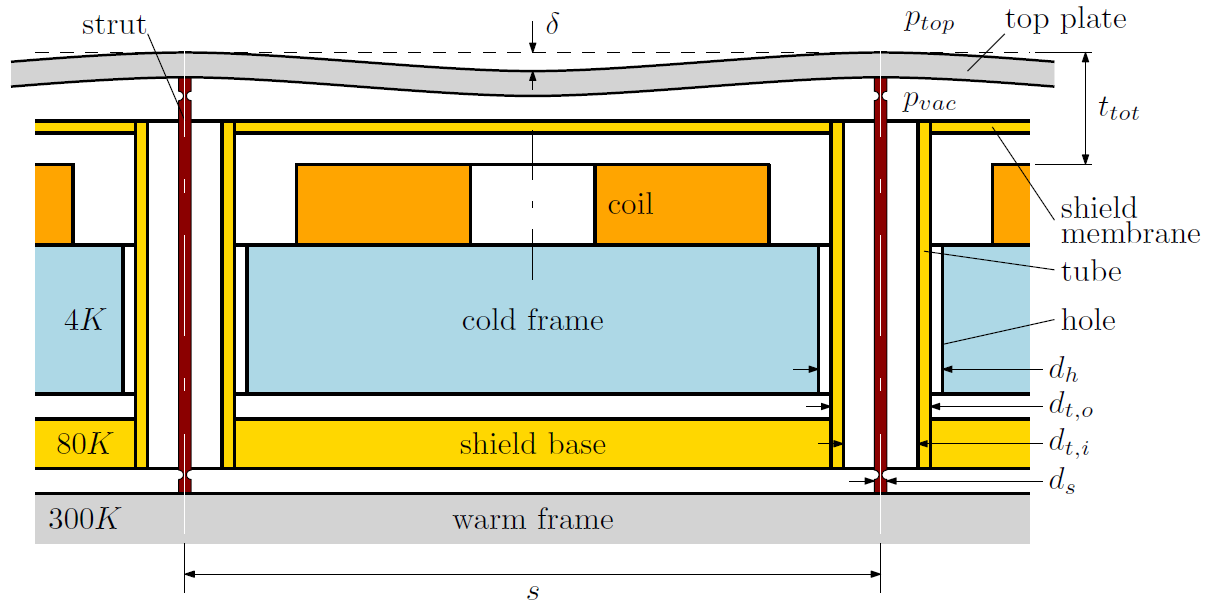Chapter 2 - Design using flexures
Chapter 7 - Design for stability
Chapter 8 - Design for low sensitivity
Superconducting magnet plate for planar motor application
Since the invention in 1911 by the Dutch physicist Heinke Kamerlingh Onnes, many superconducting magnet configurations have been developed to reliably operate over long periods of time, e.g. for particle accelerators such as the Large Hadron Collider at CERN and for scanners for magnetic resonance imaging in medical radiology. As opposed to big-science and medical applications, a superconducting coil for a motor application in high-tech equipment has specific characteristics and challenges related to the small footprint, high force density, and stable (room) temperature requirements at close proximity to the cryostat. This requires a very high filling ratio with the risk of delamination, a high-stiffness coil support with minimum thermal conductivity, and a very thin isolation layer in the magnetic gap of the superconducting motor.
Description
State-of-the art linear and planar actuators that are used in high-end mechatronic systems such as lithography- and inspection equipment, have been pushed to their limits using an optimized magnetic field density B through neodymium permanent magnets and a maximum current density J of several tens of A/mm2 in mover coils. To meet future demands, further improvement in acceleration potential of these actuators is required. Therefore, superconducting motors are being investigated [1], which allow for current densities of up to 1 kA/mm2 at low operating temperatures, enabling an increase in magnetic field density by approximately an order of magnitude [2].
In view of the very limited efficiency cryogenic coolers, which is expressed in a percentage of the Carnot efficiency, a thin double shield isolation and a stiff motor fixation without significant heat flux are key. Stiffness over thermal conductivity is only dependent on the ratio E ⁄ λ. Good candidates are Zirconia, Ti-alloy, G-10, K49 fiber and AISI 304. For the thin isolation layer in the motor, two concepts were considered, viz. ceramic spherical spacers and struts (see Figure 1). Despite the high load capacity of ceramic spacers, a large amount of spheres (2e5) is required, and despite the limited path for heat transfer, no testing at atmospheric conditions possible since the heat load to the cryostat would be in the order of a kW. The alternative based on struts between top and bottom plate, however, allows for non-contact isolation, and heat load can be minimized to a few W by application of a fully enclosing shield at 80 K. A first demonstrator of compact superconducting motor ‘tile’, which was designed as part of a Ph.D. project at the Eindhoven University of Technology as a building block for the stator in a superconducting planar motor of a wafer scanner, has been being realized for experimental verification of the magnetic field density [5] (see Figure 2). Subject for future research are the detailed thermal analyses and optimization of the cooling system, and the advanced modelling of AC-losses and quench behavior in electrically insulated vs. non-isolated coils.
  |
| Figure 2. Demonstrator of a compact superconducting magnet plate ‘tile’, which allows for quasi-static testing. |
Application:
Planar motor for wafer stage in lithography system
Realized:
Demonstrator of a compact superconducting magnet plate ‘tile’, which allows for quasi-static testing
Principle:
Strut insulation concept: Stainless steel struts support top isolation plate in the motor gap with respect to the bottom frame at room temperature through holes in the coils frame with an actively cooled shield in between fully enclosing the cold frame.
References
[1] Bruyn, B.J.H. de, Superconducting linear motors for high-dynamic applications, Ph.D. Thesis, Eindhoven University of Technology, The Netherlands, January 25, 2018.
[2] Koolmees, H.B., Bruyn, B.J.H. de, Vermeulen, J.P.M.B., Jansen, J.W., Lomonova, E.A., Performance potential of superconducting linear and planar motors, Proc. of the 17th euspen International Conference, Hannover, Germany, May 2017.
[3] Koolmees, H.B., Vermeulen, J.P.M.B., High stiffness cryogenic support without thermal conductance, Patent no. WO 2019072529 A1, October 11, 2017.
[4] Koolmees, H.B., Vermeulen, J.P.M.B., High stiffness fixation and thermal insulation in a superconducting planar motor, Proc. of the 18th euspen International Conference, Venice, Italy, June 2018.
[5] Koolmees, H.B., A superconducting magnet plate for a planar motor application, Ph.D. Thesis, Eindhoven University of Technology, The Netherlands, December 9, 2020.

